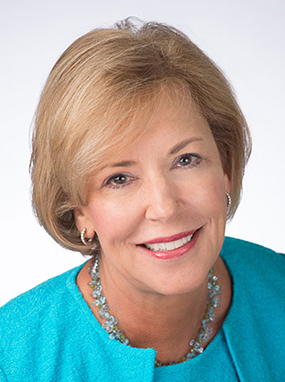Research has found that high-quality curricula have a significant impact on student achievement (Steiner, 2017; Chingos & Whitehurst, 2012). But a curriculum is not effective on its own. It requires teachers who understand it and use it with intentionality and professional judgment.
This means teachers who know the curriculum and their students well. It also means teachers who have the time and support to hone their practice collaboratively in a way that brings the curriculum alive and advances student learning (Wiener & Pimentel, 2017).
The place where that comes together in schools is through grade-level, subject-specific professional learning communities that enable teachers to plan, execute, and assess how a district or school curriculum is working for students over the course of a year.
Surveys have found that teachers regularly supplement and modify district curricula or use materials that they or their colleagues developed (Kane, Owens, Marinell, Thal, & Staiger, 2016; Opfer, Kaufman, & Thompson, 2016). Professional learning communities have the potential to ensure that those decisions are made carefully and in ways that increase coherence and learning across classrooms within a school.
At the same time, they also have the potential to ensure that the best ideas are shared across community members’ classrooms rather than confined to a single classroom. In this way, well-structured professional learning communities can help advance equity for all students in a school and, when implemented consistently across all schools, within a school district.
With the increasing availability of high-quality, standards-aligned curricula, as identified by EdReports.org and other curriculum evaluation organizations, school systems and schools now have an unprecedented opportunity to bring curriculum and PLCs together in service of student learning.
Instruction Partners, a nonprofit that works with teachers and leaders to strengthen instruction and unlock student potential, recently published a white paper examining the experiences of schools implementing rigorous curricula.
One of the sites it works with is Green Dot Public Schools in Memphis, Tennessee. At Green Dot, which uses the Eureka math and Learn Zillion English language arts curricula, teachers use an alternating structure for their work.
One week a month, teachers work in grade-level teams using a protocol to unpack an upcoming lesson together. During this time, teachers focus on preparing a lesson, such as solving the math problems they will present to students, anticipating where students might get stuck and how to support them without watering down rigor, and how to guide text-based discussions.
In the other weeks, teachers review student work from the lesson they had planned together and analyze the work to refine their instructional practice. They might look at exit ticket data, examine common assessment data for trends, and pinpoint opportunities for reteaching or things to keep in mind as they move forward to the next unit.
Green Dot is doing this in grade-specific learning teams across its network of five schools, and it has selected curriculum leads — expert teachers from each grade — to facilitate.
“We wanted to make sure this was really teacher-focused and teachers weren’t receiving information top-down from our administrators or instructional coaches,” says Chrystie Edwards, director of academics for Green Dot in Memphis.
Teachers work closely with the curriculum lead to determine which lessons are must-do versus may-do, pacing, and which questions to make anchor questions across classrooms. Green Dot continues to make adjustments to its approach in response to teacher feedback, such as shifting from virtual to in-person meetings.
“I think teachers definitely learn best when they learn from one another,” says Edwards. “One of the best outcomes that we didn’t anticipate was the productive struggle for adults … for one teacher to see another teacher struggle and persist, and to see the corresponding increase in achievement data is a motivator beyond no other. We’re starting to see pockets of that.”
Instead of spending their time writing lessons from scratch or searching for materials online, teachers can now go deeper into content and understanding how to meet each student’s needs. They then are positioned to modify and supplement the lessons in ways that increase coherence and learning. And by reviewing student work and assessing what is working together, they can advance equity.
I’ve written about this (with Tracy Crow) in the book Becoming a Learning Team (2017), which outlines a learning cycle for teachers in teams.
In our five-stage cycle, teachers examine data to identify areas for their learning focus, set student and educator learning goals, create a learning agenda for themselves, implement their learning with support from colleagues, and assess outcomes and modify their actions to improve results.
Teachers’ collaboration throughout the cycle is focused on what students are learning — or not — in the classroom. And that is grounded in the curriculum in place in the school.
These types of structured learning teams are at the heart of Learning Forward’s Standards for Professional Learning. And they are the connective tissue between having curriculum as a resource and using a curriculum well.
Structured learning teams ensure that at the school level, where teachers do the bulk of their learning, they engage collaboratively in a cycle of continuous improvement anchored in high-quality instructional materials and in students’ learning needs and progress.
Strong learning communities must be part of a coherent instructional improvement infrastructure that must also include:
-
- Skillful leaders, who develop capacity and advocate for and create support systems for professional learning;
-
- Resources that are prioritized, monitored, and coordinated for educator learning;
-
- A variety of sources and types of student, educator, and system data to plan, assess, and evaluate professional learning;
-
- Effective learning designs that integrate theories, research, and models of human learning to achieve its desired outcomes;
-
- Implementation that supports long-term change, based on understanding the change management process;
- Outcomes aligned with educator performance and state education standards.
Research demonstrates that two of the most powerful levers for improving student learning are effective teachers and high-quality curricula. Bringing them together in structured, professional learning communities has the potential to improve teaching to the benefit of all students.



![Poil blog v1[1]](https://learningforward.org/wp-content/uploads/bb-plugin/cache/poil-blog-v11-custom_crop.jpg)




